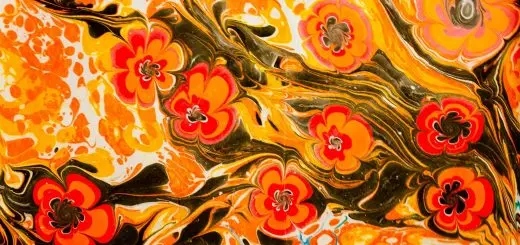Anubis: Guardian of the Dead in Egyptian Mythology

Before diving in, please note: This post is for informational purposes only. If you’d like to know more about how we approach topics, feel free to check out our friendly Disclaimer Page.
Hey there, amazing readers! 
We’re committed to delivering quality posts, and your support (even just sticking around despite the ads) means everything to us. So, bear with us, and thanks for helping us keep the good vibes rolling. Now, on to the fun stuff!
TRANSLATE BUTTON AT THE END OF THE ARTICLE
Anubis: Guardian of the Dead in Egyptian Mythology
Overview
Anubis, the ancient Egyptian god of the dead, played a significant role in the mythology and religious beliefs of the ancient Egyptians. As the guardian of the dead and the ruler of the underworld, Anubis was responsible for guiding the souls of the deceased through the afterlife. This article explores Anubis’ origins, appearance, symbolism, role in the afterlife, connection to other deities, temples and cult worship, myths and legends, archaeological evidence, and his continued influence in modern culture.
Introduction to Anubis and his role in ancient Egypt
Anubis, also known as Inpu or Anpu, was one of the most important and revered gods in ancient Egyptian mythology. He was often depicted as a man with the head of a jackal, symbolizing his connection to death and the afterlife. Anubis was believed to be the son of Osiris and Nephthys or Isis, depending on the mythological tradition. His role was primarily associated with the protection and guidance of the souls of the deceased, ensuring their safe passage to the afterlife.
The origins and evolution of Anubis in Egyptian mythology
The origins of Anubis can be traced back to the Early Dynastic Period of ancient Egypt, around 3100 BCE. However, his role and prominence in Egyptian mythology evolved over time. Originally, Anubis was associated with funeral rituals and embalming, but he gradually became more closely linked to the afterlife and the judgment of the souls. As the cult of Osiris gained popularity, Anubis became closely associated with him and played a crucial role in the Osirian mythology.
Anubis’ appearance and symbolism in ancient art and hieroglyphs
In ancient Egyptian art, Anubis was often depicted as a man with the head of a jackal or as a full jackal. This choice of animal symbolism was significant, as jackals were commonly associated with cemeteries and the scavenging of bodies. The black color of the jackal’s fur also represented the fertile soil of the Nile, which was associated with rebirth and regeneration. Anubis was sometimes portrayed wearing a headdress, holding a scepter, or carrying the Ankh, the symbol of life.
Anubis’ role in the Afterlife and the weighing of the heart
One of Anubis’ most crucial roles was to oversee the weighing of the heart ceremony, known as the "Judgment of Osiris." According to Egyptian belief, after death, the deceased would undergo judgment by a panel of gods, with Anubis playing a pivotal role. The heart of the deceased was weighed against the feather of Ma’at, the goddess of truth and justice. If the heart was lighter than the feather, the soul would be granted eternal life in the afterlife. If the heart was heavier, it would be devoured by the devourer of souls, Ammit, resulting in the soul’s ultimate demise.
The importance of Anubis in mummification and burial rituals
Anubis held significant importance in the process of mummification and burial rituals in ancient Egypt. It was believed that he supervised the embalming process and protected the deceased during the transformation from the physical body to the spiritual one. Priests who performed the intricate rituals wore masks representing Anubis to invoke his guidance and protection. Additionally, many burial sites included images of Anubis to ensure his presence and aid in the safe passage of the deceased to the afterlife.
Anubis’ connection to other gods and goddesses in Egyptian pantheon
Anubis had connections with several other gods and goddesses in the Egyptian pantheon. He was closely associated with Osiris, the god of the underworld, who was his father or foster father in different myths. Anubis also played a role in the myth of Isis and Osiris, assisting in the resurrection of Osiris after his death at the hands of his brother Seth. Additionally, Anubis was sometimes associated with Wepwawet, another jackal-headed deity associated with death and war.
Anubis’ temples and cult worship in ancient Egypt
Temples dedicated to Anubis were scattered throughout ancient Egypt, with some of the most prominent ones located in the cities of Hardai, Abydos, and Saqqara. These temples served as places of worship where rituals, offerings, and ceremonies were conducted to honor Anubis. The priests of Anubis, known as "embalmers," played an essential role in the religious practices associated with Anubis, including mummification and burial rituals. The cult of Anubis continued to thrive for centuries, and his worship remained an integral part of Egyptian religious practices.
Myths and legends surrounding Anubis in Egyptian folklore
Anubis featured prominently in various myths and legends in Egyptian folklore. In the myth of the "Contendings of Horus and Seth," Anubis played a vital role in the conflicts between the two deities. He acted as a judge and helped settle disputes between them, ultimately siding with Horus, the rightful heir to the throne. Another myth tells the story of Anubis embalming the body of Osiris after his murder by Seth, highlighting his role as the guardian of the dead and the protector of the deceased.
Anubis’ popularity and continued influence in modern culture
Despite the decline of ancient Egyptian civilization, Anubis’ legacy has endured over the centuries and continues to captivate modern culture. His image and symbolism feature prominently in various forms of media, including movies, books, and video games. Anubis’ association with death, protection, and judgment still resonates with many people, making him a beloved and recognizable figure in popular culture.
Discoveries and archaeological evidence related to Anubis worship
Archaeological discoveries have provided valuable insights into the worship of Anubis in ancient Egypt. Numerous statues and images of the god have been uncovered in tombs and temple complexes, showcasing the importance of Anubis in religious practices. The Book of the Dead, a collection of funerary texts, also provides detailed instructions on how to navigate the afterlife, with Anubis featuring prominently in the rituals and spells. These archaeological findings have contributed to a better understanding of Anubis’ role in ancient Egyptian society.
Conclusion: Anubis, the enduring symbol of death and rebirth in Egyptian mythology
Anubis, the guardian of the dead in Egyptian mythology, played a crucial role in guiding the souls of the deceased through the afterlife. From his origins in the Early Dynastic Period to his prominence in the Osirian mythology, Anubis evolved and became an enduring symbol of death, judgment, and rebirth. His appearance in ancient art, connection to other deities, role in the afterlife, and influence on burial rituals and mummification practices illustrate the significance of Anubis in ancient Egyptian culture. Today, Anubis continues to fascinate and inspire, serving as a powerful symbol of the mysteries of life and death.

The Enlightenment Journey is a remarkable collection of writings authored by a distinguished group of experts in the fields of spirituality, new age, and esoteric knowledge.
This anthology features a diverse assembly of well-experienced authors who bring their profound insights and credible perspectives to the forefront.
Each contributor possesses a wealth of knowledge and wisdom, making them authorities in their respective domains.
Together, they offer readers a transformative journey into the realms of spiritual growth, self-discovery, and esoteric enlightenment.
The Enlightenment Journey is a testament to the collective expertise of these luminaries, providing readers with a rich tapestry of ideas and information to illuminate their spiritual path.
Our Diverse Expertise
While our primary focus is on spirituality and esotericism, we are equally passionate about exploring a wide range of other topics and niches 

To ensure we provide the most accurate and valuable insights, we collaborate with trusted experts in their respective domains 
Our blog originally focused on spirituality and metaphysics, but we’ve since expanded to cover a wide range of niches. Don’t worry—we continue to publish a lot of articles on spirituality! Frequently visit our blog to explore our diverse content and stay tuned for more insightful reads.






































































